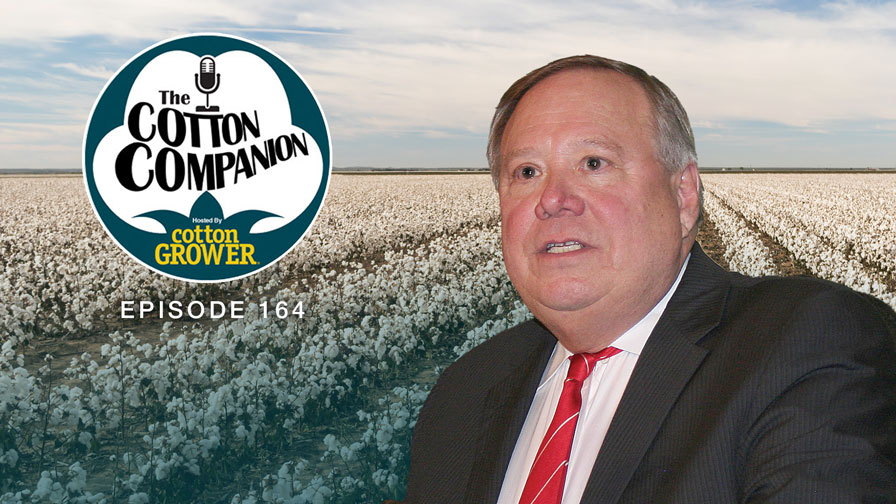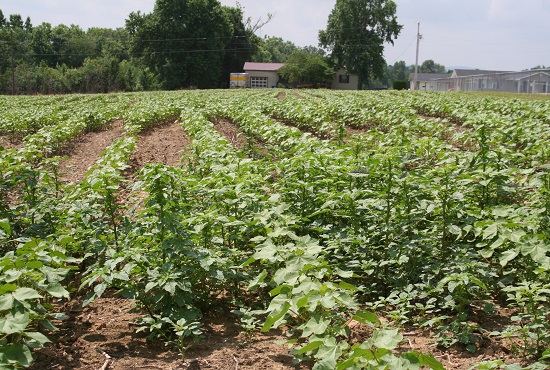Don’t Follow the Parade

For well over a century, the scenery in the Mississippi Delta remained the same during the growing season. Cotton dominated the landscape from the state’s beginning, gobbling up nearly every bit of agricultural acreage in the region.
But starting in 2007, that landscape began to change. Cotton prices dipped and grain prices soared while insect and weed pressure hounded cotton production. Naturally, farmers in the region began to explore other options. Corn and soybean acreage increased to record highs in Mississippi, and by 2009 the state planted its smallest cotton crop in more than 150 years of recorded history.
Farming 4,000 acres of that Delta soil just north of Leland, MS, George Vanlandingham and his son Brian witnessed that paradigm shift in agriculture firsthand. They say they understand why many of their neighbors switched into other crops during those lean years for cotton.
“When we were planting cotton, the price was 70-something cents. Beans were at $10. Everyone was planting beans, and no one was planting cotton,” Brian says.
The Vanlandinghams watched as many of their neighbors sold off all of their cotton equipment, as well.
“There are very few cotton pickers left around here. Pretty much everyone stopped growing cotton,” George says. “But we decided to stick with cotton. Something that I’ve always believed is that we shouldn’t follow any parades. What I mean by that is that everybody else went completely into the grains – beans, beans, beans. But we don’t ever want to follow the crowd. Cotton has been good to us, so we decided to stick with it.”
The Vanlandinghams did switch some of their acreage to corn, but continued to devote thousands of acres to cotton. They went from wall-to-wall cotton in 2007 to a 50/50 cotton-and-corn rotation in 2008. The rotational benefits, they say, were a primary factor behind that decision.
“We had to make an investment in a combine and that was pretty much our only infrastructure purchase,” George says. “The benefits you get for plating cotton behind corn are pretty hard to put a figure on, but the rotation helps with everything. It’s a big help with weed control because you have so many more options with your herbicides, and there are significant yield benefits too.”
While glyphosate-resistance is beginning to creep onto many farms in the area, the Vanlandinghams believe crop rotation is keeping their fields clean. They credit the atrazine they are able to apply to their corn ground with keeping glyphosate-resistant pigweed at bay.
This year saw the farm produce record cotton yields. While the corn rotation certainly played a role in that feat, George believes better seed technology is the driving force.
Yield Boom
The Vanlandinghams take a simple approach to variety selection: Find a winner and stick with it. So when they saw what Deltapine’s DP 0912 B2RF could do in their area, they devoted every acre of their cotton ground to the variety.
“Once we find a variety that we want, we stick with it. DP 0912 is a good one because it really took the heat this year. It’s a mid- to early-season variety. We were able to get our crop out early, it took the heat, and it also waters really well. It doesn’t shed its fruit when you water it. It sticks,” George says. Brian says an added bonus was that the crop never got too “growthy,” and they were able to get through the season without ever spraying a plant-growth regulator.
But as with nearly all cotton farmers, yield is what ultimately matters the most. In 2010, the Vanlandinghams produced some of the highest yields they have seen with the help of 0912. That’s why they say they’ll plant the variety again in 2011.
“It was an ideal year, all around. Between prices, yields, the weather during the growing season, and the low plant bug pressure, it was pretty much a perfect year – which I have never had in 33 years growing cotton,” says George.
Persistence Pays
Of course, had they switched completely out of cotton, the Vanlandinghams wouldn’t be enjoying the benefits of this year’s bumper crop.
“What I meant by ‘don’t follow the parade’ is that cotton has always been good to us. We stick with it during the down years because you never know when it’s going to turn around in a hurry, like it has this year,” says George.
For Brian, the decision to stick with cotton through difficult years was an easy one. He is the fourth generation to grow cotton on the family’s land, and he’s not about to break from tradition.
“My dad grows it, and his father-in-law grew it before him, and his daddy grew it before that,” he says. “I’m the fourth generation to farm cotton. That’s 100 years of dancing with the one who brought you. That strategy has worked out so far.”








